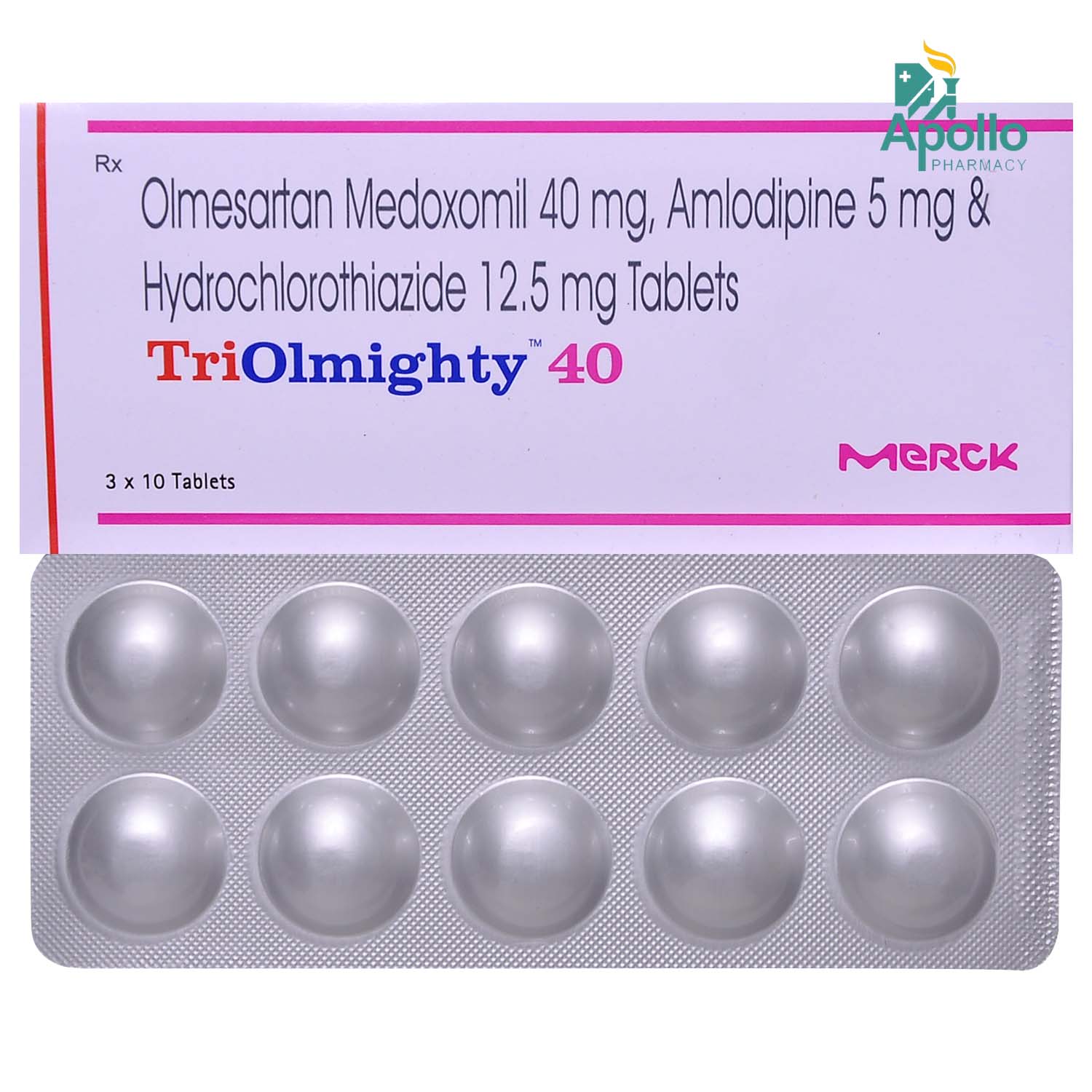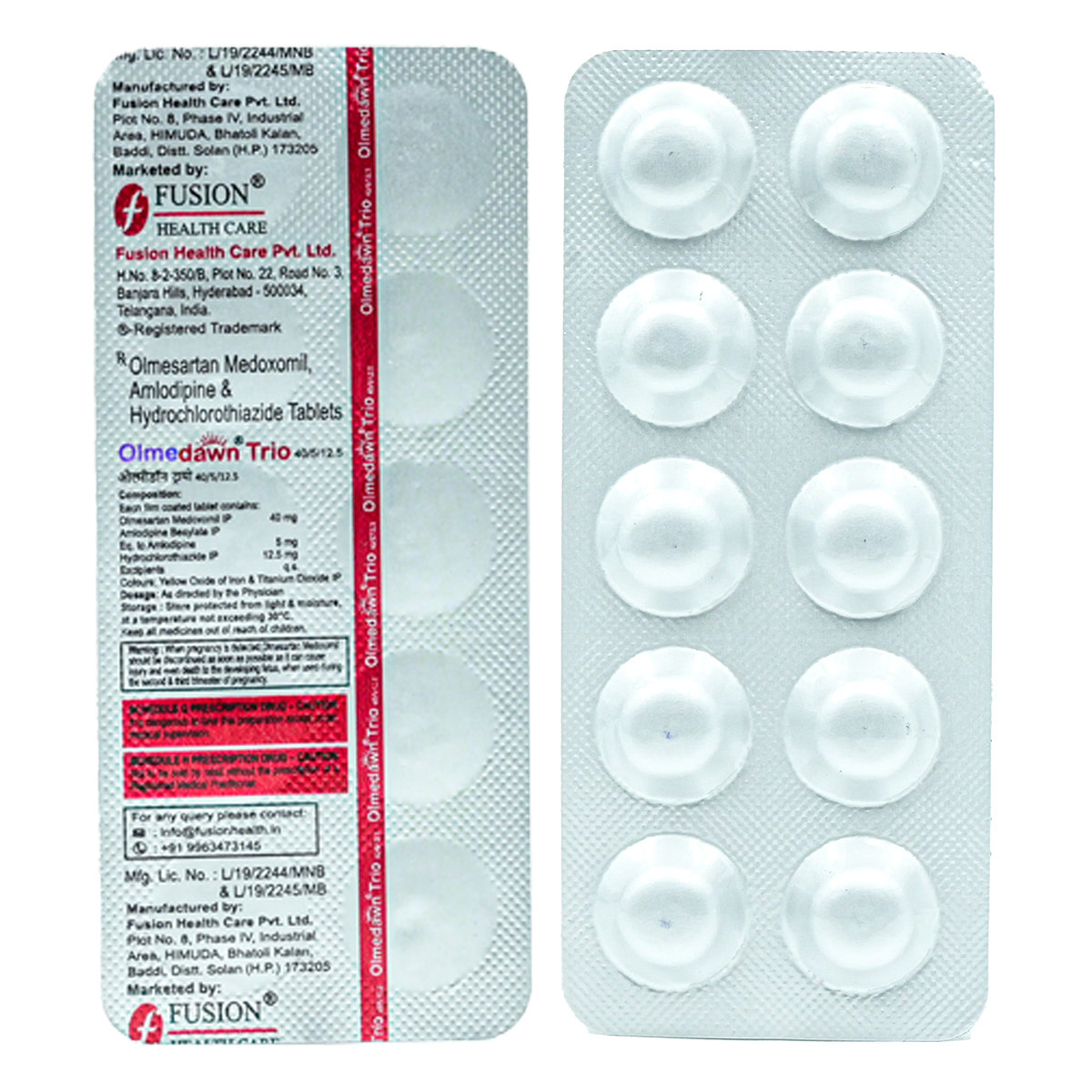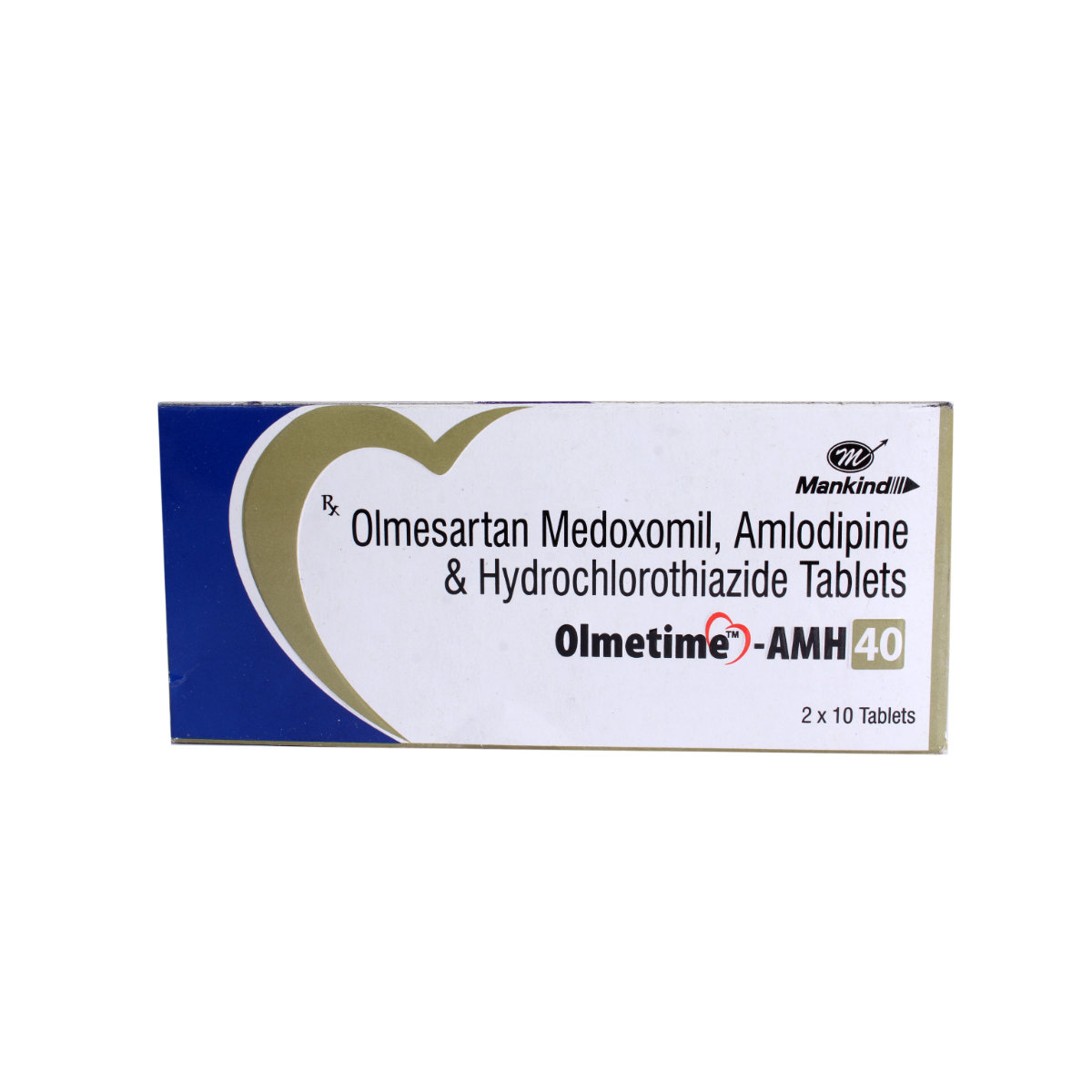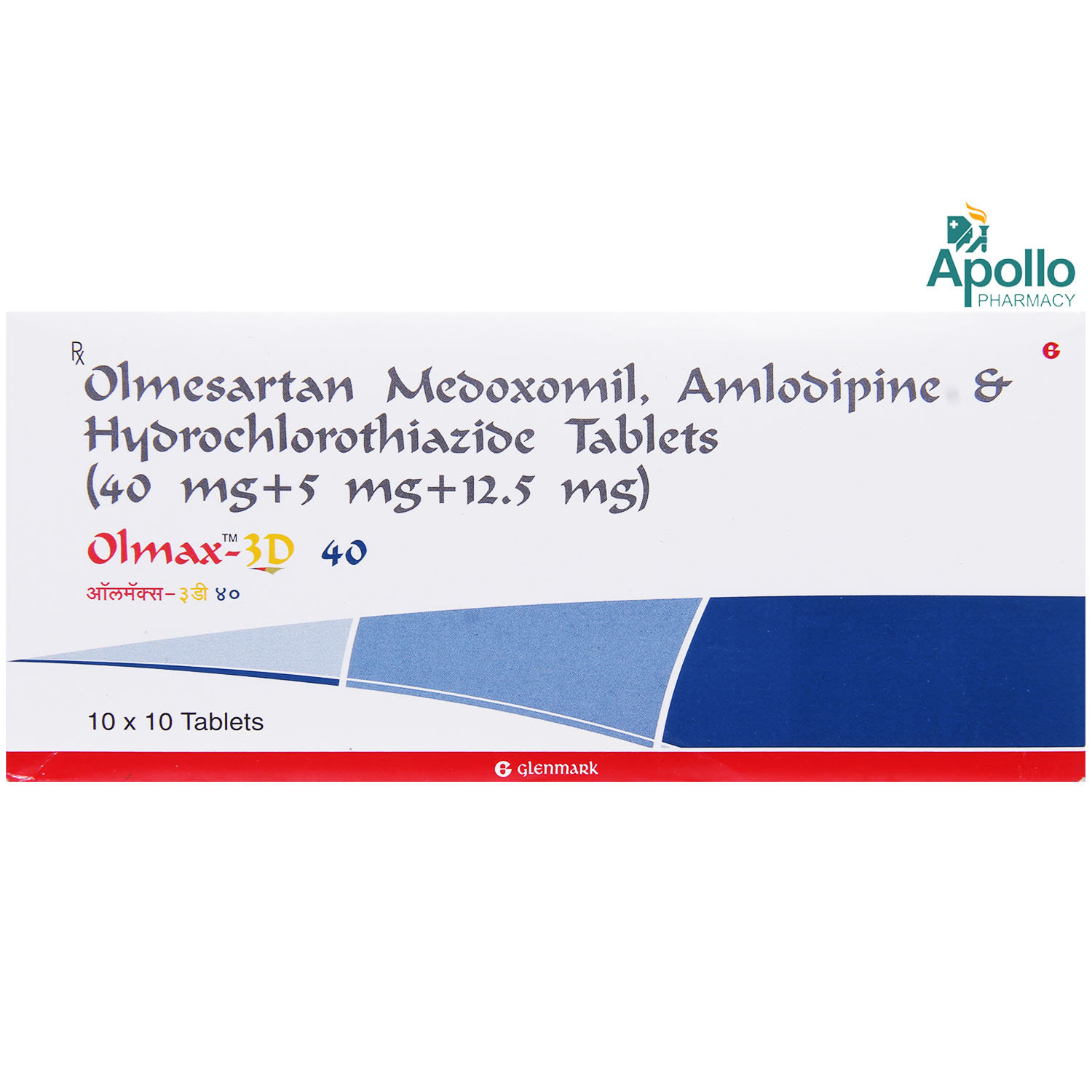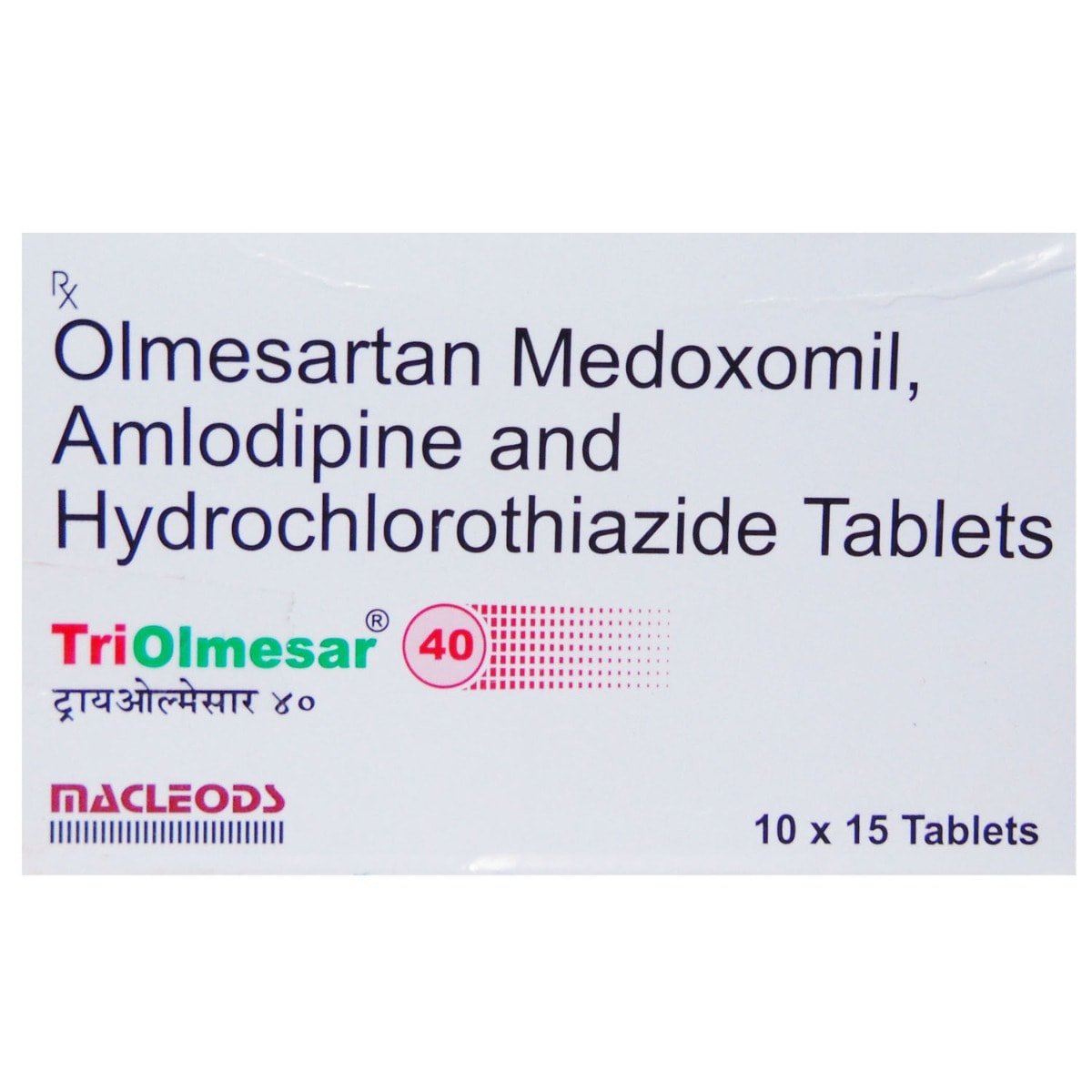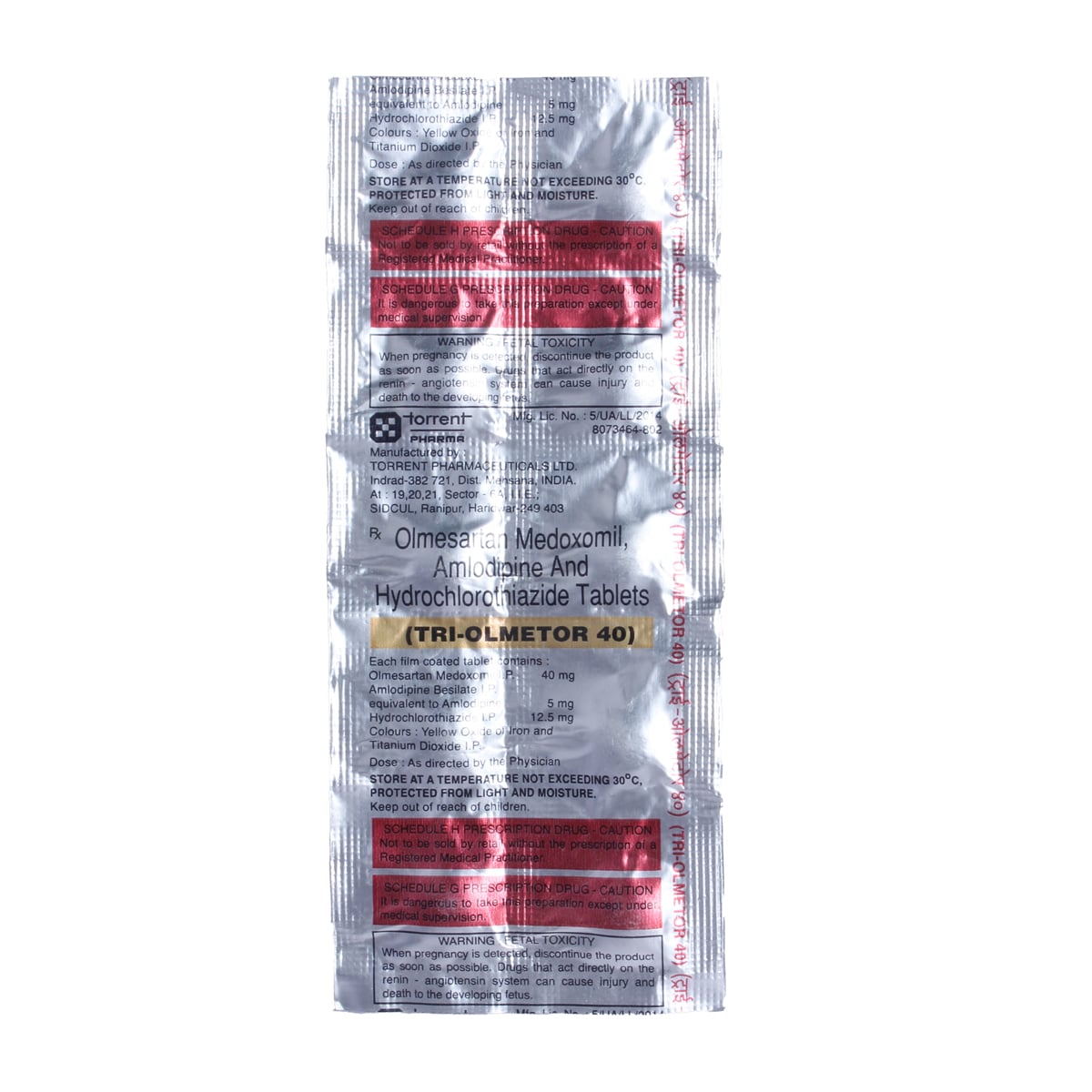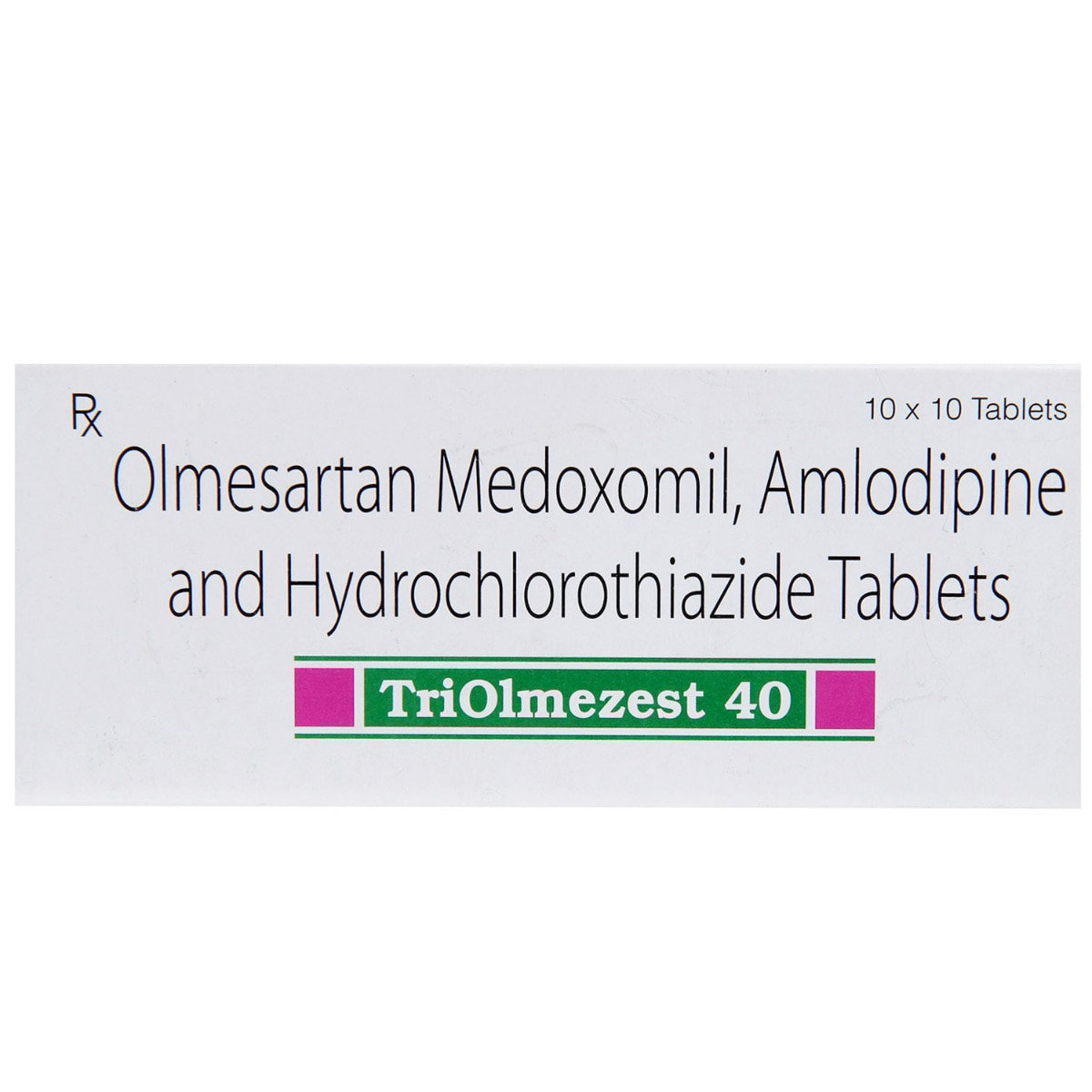Golme AH Tablet


MRP ₹129
(Inclusive of all Taxes)
₹19.4 Cashback (15%)
Provide Delivery Location
Online payment accepted
 Prescription drug
Prescription drugWhats That
Manufacturer/Marketer :
Consume Type :
Return Policy :
About Golme AH Tablet
Golme AH Tablet belongs to a group of medications called 'anti-hypertensives' primarily used for lowering high blood pressure (hypertension) by removing extra fluid (electrolytes) from the body. High blood pressure is a chronic condition in which the blood's force against the artery wall is high. As a result, it increases the risk of heart-related diseases like heart attack, heart failure, stroke, irregular heartbeat, and other complications.
Golme AH Tablet is a combination of three medicines: Olmesartan medoximil, Amlodipine, and Hydrochlorothiazide. Olmesartan medoximil is a prodrug and breaks down into active form, i.e., olmesartan once absorbed in the GIT (Gastrointestinal tract). An angiotensin receptor blocker (ARB) blocks the hormone angiotensin, thereby relaxing and widening the narrowed blood vessels. Amlodipine is a calcium channel blocker; it reduces the heart's workload and makes it more efficient at pumping blood throughout the body. Hydrochlorothiazide is a diuretic or water pill that removes extra water/fluid and certain electrolyte overload from the body. Together, Golme AH Tablet lowers fluid overload, raises blood pressure, improves blood flow, and reduces the future risk of a heart attack and stroke.
Depending upon your medical condition, you are advised to take Golme AH Tablet for as long as your doctor has prescribed it for you. The most common side effects of Golme AH Tablet are nausea, upset stomach, dehydration, headache, diarrhoea, electrolyte imbalance, headache, feeling exhausted, swollen ankles, dizziness, and decreased blood pressure in some cases. Most of these side effects of Golme AH Tablet do not require medical attention and gradually resolve over time. However, if the side effects are persistent, reach out to your doctor.
Do not use potassium supplements or salt substitutes unless your doctor tells you. In rare cases, Golme AH Tablet can cause a condition that results in a skeletal muscle problem, leading to further kidney failure. If you notice unexplained muscle pain, dark-coloured urine, tenderness, or weakness, especially if you also have a fever or unexplained tiredness, immediately contact the doctor. Try not to stop taking this medicine of your own. Let your doctor know about this, as it may cause a rise in blood pressure and increase heart disease and stroke risk. Inform your doctor if you are suffering from kidney, liver, heart disease, or diabetes. If you are pregnant or breastfeeding, do not take Golme AH Tablet as it is a category D pregnancy drug and may harm the baby. Do not use the Golme AH Tablet if you cannot urinate, are dehydrated, have low blood pressure (hypotension), or have had cardiogenic shock (sudden stopping blood flow to the heart). Please tell your doctor if you are taking any other medicines or are allergic to this medicine. Reducing table salt (sodium chloride) in your food often helps lower blood pressure.
Uses of Golme AH Tablet
Directions for Use
Key Benefits
Golme AH Tablet belongs to a group of medications called 'anti-hypertensives' primarily used for lowering high blood pressure (hypertension) by removing extra fluid (electrolytes) from the body. Golme AH Tablet is a combination of three medicines: Olmesartan medoximil, Amlodipine, and Hydrochlorothiazide. Olmesartan medoximil is a prodrug and breaks down into active form, i.e., olmesartan once absorbed in the GIT (Gastrointestinal tract). An angiotensin receptor blocker (ARB) blocks the hormone angiotensin, thereby relaxing and widening the narrowed blood vessels. Amlodipine is a calcium channel blocker; it reduces the heart's workload and makes it more efficient at pumping blood throughout the body. Hydrochlorothiazide is a diuretic or water pill that removes extra water/fluid and certain electrolyte overload from the body. Together, Golme AH Tablet lowers fluid overload, raises blood pressure, improves blood flow, and reduces the future risk of a heart attack and stroke.
Storage
- Inform your doctor about dizziness symptoms. They may adjust your medication regimen or prescribe additional medications to manage symptoms.
- Follow your doctor's instructions for taking medication, and take it at the same time every day to minimize dizziness.
- When standing up, do so slowly and carefully to avoid sudden dizziness.
- Avoid making sudden movements, such as turning or bending quickly, which can exacerbate dizziness.
- Drink plenty of water throughout the day to stay hydrated and help alleviate dizziness symptoms.
- If you're feeling dizzy, sit or lie down and rest until the dizziness passes.
- Track when dizziness occurs and any factors that may trigger it, and share this information with your doctor to help manage symptoms.
- Hydrate your body: Drink enough water to prevent dehydration and headaches.
- Calm Your Mind: Deep breathing and meditation can help you relax and relieve stress.
- Rest and Recharge: Sleep for 7-8 hours to reduce headache triggers.
- Take rest: lie down in a quiet, dark environment.
- Cold or warm compresses can help reduce tension.
- Stay Upright: Maintain good posture to keep symptoms from getting worse.
- To treat headaches naturally, try acupuncture or massage therapy.
- Over-the-counter pain relievers include acetaminophen and ibuprofen.
- Prescription Assistance: Speak with your doctor about more substantial drug alternatives.
- Severe Headaches: Seek emergency medical assistance for sudden, severe headaches.
- Frequent Headaches: If you get reoccurring headaches, consult your doctor.
- Headaches with Symptoms: Seek medical attention if your headaches include fever, disorientation, or weakness.
Drug Warnings
Do not use Golme AH Tablet if you are pregnant, planning for pregnancy, or unable to urinate (anuria). If you have diabetes and taking Golme AH Tablet with other blood pressure-lowering pills like 'aliskiren,' immediately stop taking both together and consult a doctor. Besides this, it is contraindicated in low blood pressure (hypotension), cardiogenic shock (sudden stopping of blood flow to the heart), and aortic stenosis (heart valve problem). Golme AH Tablet may pass into breast milk, so before starting Golme AH Tablet, either you need to stop nursing or you should not take Golme AH Tablet while breastfeeding. Please inform your doctor before surgery if you are taking Golme AH Tablet as it needs to be stopped because it might lower the blood pressure further if taken along with local anaesthesia. Avoid potassium salt or its substitute intake while using Golme AH Tablet to avoid any electrolyte imbalance. Golme AH Tablet can pass into breast milk, but its effect on the baby is unknown. So, it is better to tell your doctor if you take Golme AH Tablet and breastfeeding.
Drug-Drug Interactions
Drug-Drug Interactions
Login/Sign Up
Using aliskiren together with olmesartan may increase the risk of serious side effects (kidney problems, low blood pressure, and high potassium levels in the blood).
How to manage the interaction:
Taking Golme AH Tablet with Aliskiren is not recommended as it can cause an interaction, they can be taken if advised by a doctor. You should seek medical attention if you experience nausea, vomiting, weakness, confusion, tingling of the hands and feet, feelings of heaviness in the legs, a weak pulse, or a slow or irregular heartbeat.It is crucial that you continue to consume enough fluids while taking these medications. Do not stop using any medications without consulting a doctor.
Using Golme AH Tablet together with dantrolene may increase the risk of hyperkalemia (high blood potassium).
How to manage the interaction:
Taking Golme AH Tablet with Dantrolene can cause an interaction, consult a doctor before taking it. You should seek medical attention if you experience nausea, vomiting, weakness, confusion, tingling of the hands and feet, a weak pulse, or a slow or irregular heartbeat. Do not stop using any medications without talking to a doctor.
Taking Cisapride and Golme AH Tablet can increase the risk of an irregular heart rhythm which can be severe. The risk increases in patients with a history of heart illness or electrolyte imbalance.
How to manage the interaction:
Combining Cisapride and Golme AH Tablet together is generally avoided as it can possibly result in an interaction, it can be taken if advised by your doctor. However, if you experience any symptoms like dizziness, lightheadedness, fainting, or fast or pounding heartbeats, consult the doctor immediately. Do not stop using any medications without a doctor's advice.
Taking Dofetilide and Golme AH Tablet can increase the risk of an irregular heart rhythm which can be severe. The risk increases in patients with a history of heart illness or electrolyte imbalance.
How to manage the interaction:
Combining Dofetilide and Golme AH Tablet together is not recommended as it can possibly result in an interaction, it can be taken if advised by your doctor. However, if you experience any symptoms like sudden dizziness, lightheadedness, fainting, shortness of breath, chest pain or tightness, rapid heartbeat, or memory loss, contact your doctor immediately. Do not discontinue any medications without consulting a doctor.
Using Golme AH Tablet with Potassium chloride may increase Potassium levels in the blood.
How to manage the interaction:
Although taking Golme AH Tablet together with Potassium chloride may lead to an interaction but can be taken if prescribed by the doctor. However, consult the doctor if you experience nausea, vomiting, weakness, disorientation, tingling in your hands and feet, feelings of heaviness in your legs, a weak pulse, or a slow or irregular heartbeat. It is important to maintain proper fluid intake while taking these medications. Do not stop using any medications without talking to a doctor.
Coadministration of Golme AH Tablet with potassium iodide may increase potassium levels in the blood. (High potassium levels can cause hyperkalemia, which can lead to kidney failure, muscular paralysis, abnormal heart rhythm, and cardiac arrest in extreme cases).
How to manage the interaction:
Although taking Golme AH Tablet together with potassium iodide may lead to an interaction but can be taken if prescribed by the doctor. However, consult the doctor if you experience nausea, vomiting, weakness, disorientation, tingling in your hands and feet, feelings of heaviness in your legs, a weak pulse, or a slow or irregular heartbeat. It is important to maintain proper fluid intake while taking these medications. Do not stop using any medications without talking to a doctor.
Taking Golme AH Tablet with trimethoprim may increase potassium levels in the blood.
How to manage the interaction:
Although taking Golme AH Tablet with trimethoprim may lead to an interaction but can be taken if prescribed by the doctor. However, consult the doctor if you experience nausea, vomiting, weakness, disorientation, tingling in your hands and feet, feelings of heaviness in your legs, a weak pulse, or a slow or irregular heartbeat. Do not stop using any medications without talking to a doctor.
Golme AH Tablet when combined with benazepril may cause low blood pressure, kidney problems, and may increase potassium levels in the blood.
How to manage the interaction:
Although taking Golme AH Tablet with benazepril may lead to an interaction but can be taken if prescribed by the doctor. However, consult the doctor if you experience nausea, vomiting, weakness, disorientation, tingling in your hands and feet, feelings of heaviness in your legs, a weak pulse, or a slow or irregular heartbeat. Do not stop using any medications without talking to a doctor.
Taking lithium with Golme AH Tablet may significantly increase the blood levels of lithium .
How to manage the interaction:
Although taking Golme AH Tablet alongside lithium can lead to interaction, they can be taken if prescribed by a doctor. However, if you develop sleepiness, dizziness, confusion, loose stools, vomiting, muscular weakness, muscle incoordination, a shaking sensation, blurred vision, ringing in the ears, excessive thirst, and/or increased urination, consult a doctor. Do not stop using any medications without talking to a doctor.
Taking Golme AH Tablet with triamterene may increase potassium levels in the blood. (High potassium levels can cause hyperkalemia, which can lead to kidney failure, muscular paralysis, abnormal heart rhythm, and cardiac arrest in extreme cases).
How to manage the interaction:
Although taking Golme AH Tablet with triamterene may lead to an interaction but can be taken if prescribed by the doctor. However, consult the doctor if you experience nausea, vomiting, weakness, disorientation, tingling in your hands and feet, feelings of heaviness in your legs, a weak pulse, or a slow or irregular heartbeat. Do not stop using any medications without talking to a doctor.
Drug-Food Interactions
Drug-Food Interactions
Login/Sign Up
Lentils, Orange Juice, Oranges, Raisins, Potatoes, Salmon Dried, Spinach, Sweet Potatoes, Tomatoes, Coconut Water, Beans, Beetroot, Broccoli, Bananas, Apricots, Avocado, Yogurt
How to manage the interaction:
Taking Golme AH Tablet with potassium-containing salt substitutes or potassium supplements can cause high levels of potassium in the blood. Avoid taking potassium-containing salt substitutes or potassium supplements while being treated with Golme AH Tablet.
Diet & Lifestyle Advise
- Create a well-balanced and healthy diet that includes vegetables, fruits, whole grains, legumes, omega-3-rich foods, and lean protein sources.
- Keep your weight under control with a BMI of 19.5-24.9.
- Avoid chronic stress, as it can raise your blood pressure.
- Spend time with your loved ones to cope with stress and practice mindfulness techniques.
- Be mindful of salt; consume no more than 2,300 mg each day.
- Limit or avoid alcohol consumption.
- Quitting smoking is the best strategy to lower the risk of heart disease.
Side Effects of Golme AH Tablet
- Nausea
- Upset stomach
- Dehydration
- Headache
- Dry mouth
- Muscle cramps/weakness
- Fast/slow/irregular heartbeat
- Diarrhoea
- Electrolyte imbalance
- Headache
- Feeling exhausted
- Swollen ankles
- Dizziness
- Decreased blood pressure
Habit Forming
Therapeutic Class
All Substitutes & Brand Comparisons
RX
Out of StockEzisartan OAH 40mg/5mg/12.5mg Tablet
₹100
(₹9.0 per unit)
22% CHEAPERRX
Out of StockOsarten AH 40mg/5mg/12.5mg Tablet
Roussel Laboratories Pvt Ltd
₹160
(₹14.4 per unit)
24% COSTLIERRX
O-Relate-AH 40 Tablet 15's
Olcare Laboratories Pvt Ltd
₹241
(₹14.46 per unit)
24% COSTLIER
Product Substitutes
Drug-Diseases Interactions
Drug-Diseases Interactions
Login/Sign Up
FAQs
Golme AH Tablet is a combination of three medicines: Olmesartan medoximil, Amlodipine, and Hydrochlorothiazide. Olmesartan medoximil relaxes and widens the narrowed blood vessels. Amlodipine reduces the heart's workload and makes the heart more efficient at pumping blood throughout the body. Hydrochlorothiazide is a diuretic or water pill that removes extra water/fluid and certain electrolyte overload from the body. Together, Golme AH Tablet lowers fluid overload, raises blood pressure, improves blood flow, and reduces the future risk of a heart attack and stroke.
Golme AH Tablet can be safely taken as long as your doctor prescribes it. Conditions such as high blood pressure are life-long conditions, and one should not abruptly discontinue it without discussing it with a doctor. Discontinuing Golme AH Tablet may lead to increased blood pressure and a high risk of heart attack and stroke.
It's unlikely that Golme AH Tablet affects fertility in men or women. However, in some cases, some water pills like hydrochlorothiazide may lead to erectile dysfunction. For the best advice, please consult your doctor.
Please inform your doctor before surgery if you are taking Golme AH Tablet as it needs to be stopped because it might lower the blood pressure further if taken along with local anaesthesia.
Do not use Golme AH Tablet if you are pregnant, planning for pregnancy, or unable to urinate. If you have diabetes and taking Golme AH Tablet with other blood pressure-lowering pills like 'aliskiren', immediately stop taking both together and consult a doctor.
High blood pressure during pregnancy is called 'Pregnancy-induced hypertension (PIH). It is harmful to both the baby and the mother. In the mother, very high blood pressure can cause seizures (fits), headache, swelling of feet, kidney damage, and a higher risk of bleeding during pregnancy and delivery. This can also affect the baby by causing abnormal fetal heart rate, risk of stillbirth, and a small baby. So, during pregnancy, you should have regular blood pressure monitoring. Visit your Obstetrician if you have any concerns about blood pressure during pregnancy.
Yes, Golme AH Tablet is known to cause ankle swelling (oedema) upon long-term use as Golme AH Tablet amlodipine. Please try to keep your feet up when sitting for long hours. If the problem persists still, consult your doctor and do as advised.
Drug-Drug Interactions Checker List
- LITHIUM
- DIGOXIN
- ASPIRIN
- METFORMIN
- INSULIN
- SILDENAFIL
- SIMVASTATIN
- CYCLOSPORINE
- ATENOLOL
- ALISKIREN
- ENALAPRIL
- LISINOPRIL
- RAMIPRIL
- METOPROLOL
- IBUPROFEN
- CARBENOXOLONE
Disease/Condition Glossary
Hypertension: It is a chronic condition when blood pressure is too high. This condition can lead to hardened arteries (blood vessels), decreasing the blood and oxygen flow to the heart. Blood pressure is the measurement of the force our heart uses to pump blood to all body parts. Raised blood pressure can cause chest pain (angina) and heart attack (when the blood supply to the heart is blocked). High blood pressure also causes brain damage (stroke) and kidney failure. High blood pressure can be diagnosed with the help of a blood pressure monitor or sphygmomanometer. Systolic pressure is the pressure when the heart pumps blood out. On the other hand, diastolic pressure is when your heart is at the resting stage between heartbeats. If your blood pressure is 140/90 mm of Hg, it means the systolic pressure is 140 mm of Hg, and diastolic pressure is 90 mm of Hg. Ideal blood pressure should be between 90/60 mm of Hg and 120/80 mm of Hg.

Have a query?
Alcohol
Safe if prescribed
You are recommended not to consume alcohol and Golme AH Tablet to avoid unpleasant side effects like drowsiness, dizziness, and liver damage.
Pregnancy
Consult your doctor
Golme AH Tablet is not recommended during pregnancy as it contains Olmesartan, which is a category D pregnancy drug. This medicine may cause fetal damage and can affect the unborn baby (fetus).
Breast Feeding
Consult your doctor
Golme AH Tablet is known to pass breast milk, but its effect on the baby is unknown. So, before breastfeeding, let your doctor know about this. Either you need to stop breastfeeding for using Golme AH Tablet or stop taking Golme AH Tablet.
Driving
Safe if prescribed
Drive with caution; Golme AH Tablet usually causes drowsiness and affects driving ability.
Liver
Consult your doctor
Golme AH Tablet to be taken with caution, especially if you have or have had a history of liver disease. Your doctor will have to change the dosage depending on your medical condition and your reaction to treatment.
Kidney
Consult your doctor
Golme AH Tablet to be taken with caution, especially if you have had a history of kidney disease. Your doctor will have to change the dosage depending on your medical condition and your reaction to treatment.
Children
Safe if prescribed
Efficacy and safety of Golme AH Tablet have not been established in children. If prescribed, it should be strictly under medical supervision and only if the benefits outweigh the harm.


